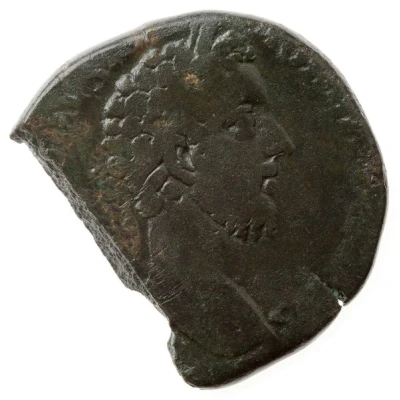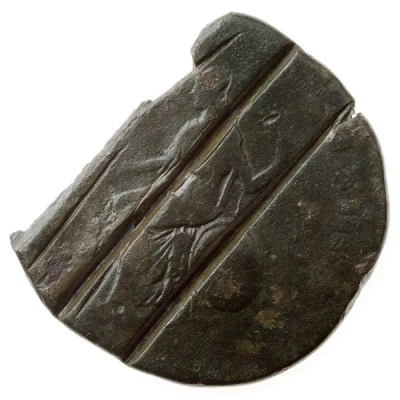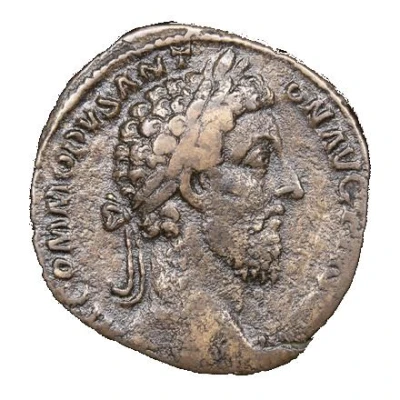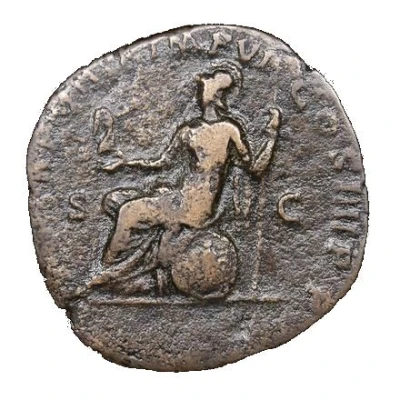


© Museum für Ur- und Frühgeschichte Thüringens (CC BY-NC-ND 4.0 DE)
Sestertius - Commodus P M TR P VIIII IMP VI COS IIII P P S C; Roma and Victory
| Bronze | 21.9 g | 32 mm |
| Issuer | Rome › Roman Empire (27 BC - 395 AD) |
|---|---|
| Emperor | Commodus (Lucius Aurelius Commodus) (177-192) |
| Type | Standard circulation coin |
| Years | 183-184 |
| Value | 1 Sestertius = ¼ Denarius |
| Currency | Denarius, Reform of Augustus (27 BC – AD 215) |
| Composition | Bronze |
| Weight | 21.9 g |
| Diameter | 32 mm |
| Shape | Round (irregular) |
| Technique | Hammered |
| Demonetized | Yes |
| Updated | 2024-10-06 |
| Numista | N#265752 |
|---|---|
| Rarity index | 100% |
Reverse
Roma, helmeted, draped, seated left on shield, holding Victory in extended right hand and vertical spear in left hand.
Script: Latin
Lettering: P M TR P VIIII IMP VI COS IIII P P S C
Translation:
Pontifex Maximus, Tribunicia Potestate Nona, Imperator Sextum, Consul Quartum, Pater Patriae. Senatus Consultum.
High priest, holder of tribunician power for the ninth time, supreme commander (Imperator) for the sixth time, consul for the fourth time, father of the nation. Decree of the senate.
Comment
Mass varies: 19.64–24.08 g;Diameter varies: 32–32.32 mm;
Example of this type:
Museum für Ur- und Frühgeschichte Thüringens
Source:
Online Coins of the Roman Empire (OCRE)
Interesting fact
One interesting fact about this coin is that it features a unique combination of symbols and imagery. On one side, it depicts the Roman goddess Victory standing on the prow of a ship, while on the other side, it shows the Roman Emperor Commodus wearing a radiate crown and holding a scepter. This combination of military and imperial imagery reflects the powerful and expansionist policies of the Roman Empire during the reign of Commodus. Additionally, the use of bronze as the material for the coin reflects the economic and technological advancements of the Roman Empire during this time period.

